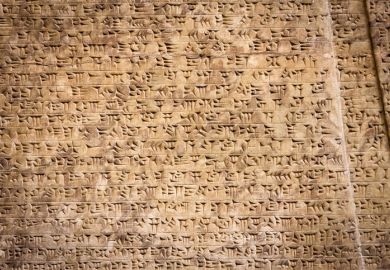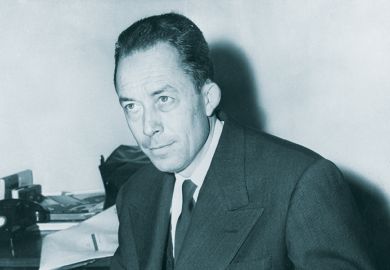All who love Dickens have a strange sense that he is really inexhaustible." With this line, taken from G. K. Chesterton's uncannily perceptive writings on Dickens, Alan Pascoe and Penguin Classics introduce a remarkable book. As the 20th century reaches its close, few would have suspected that the world's most popular author, whose novels have been force fed to us in school, done to death at university, critically tried and found wanting by many scholars, would still have close on a thousand pages of fresh, arresting and irresistible writing with which to provoke debate for another century. Yet so it would seem.
For material, editor Pascoe has gone back to the two phenomenally successful journals which Dickens founded, edited and published during the last 20 years of his life: Household Words and All the Year Round. Despite their staid appearance, with a thousand words of close-printed type in two columns on each page, and no illustrations, these weekly periodicals sold tens and often hundreds of thousands of copies per issue. In 1861, Dickens himself reckoned the sales of All the Year Round to be "several thousands higher than that of The Times", while the American version was reputed to have upwards of three million readers.
Dickens used these journals as a platform from which to speak to his readers on subjects close to his heart, but given their hybrid status as half-newspaper, half-family "magazine", his contributions to them vary hugely in manner and scope. Some of the wryest and most humorous pieces border on autobiography, except that with Dickens the fanciful is so inseparable from his telling of even the baldest narrative, that the sustained factuality of autobiography would be impossible.
So here we have the adventures of a small boy - one with a large amount of Dickens in him, but a fictional creature nevertheless - lost by a nameless grown-up in London, in "Gone astray". And the frightful tales, plentifully spiced with gore and shipyard lore, told by the "female bard" whose job it was to put another small boy to bed of nights ("Nurse's stories"). Even the familiar essays penned by someone we might recognise as the adult Dickens telling us about his life and nocturnal ramblings through the metropolis, are ambiguous constructions, partaking equally of the minuteness of authentic observation and the tallness of traveller's tales ("Lying awake", "Night walks").
Yet Dickens is loath to finish a passage of prose, however magical and finely poised, without hammering home some burning message. In his novels, this impulse could often be obtrusive, but in his journalism, it is a major strength. In his assumed guises as city stroller, night patroller, lazy tourist or private investigator, he leads us into strange places and lays traps for our emotions. In articles like "On duty with Inspector Field", when he steps into the thief-ridden precincts of Rat's Castle with the Metropolitan Police, or "A nightly scene in London", when he comes across homeless women shut out of the workhouse and sleeping on the pavement like "dead bodies, taken out of graves ... and covered with rags", Dickens works to provoke wonder and outrage in the reader, while conveying to us something of the dubiousness of his position as spectator. For Dickens suffers from a quintessentially modern dilemma as a reporter: he becomes so involved in the act of hunting down and showing what is unusual, shocking and bizarre in everyday life, that any formal moralising that follows is not only flat but heavily compromised.
Yet when Dickens has some of the absurdities and "humbugs" of social or political life in front of him, he seldom fails to rise to the occasion. His monologue in "Lively turtle", supposedly from the lips of a portly provincial alderman, is a hilarious exercise in self-condemnation. Called on to "love his brother", Snoady obliges: "'My good fellow, I love you very much; go along with you; keep to your own road; leave me to mine; whatever is, is right; whatever isn't is wrong; don't make a disturbance!' It seems to me, that this is at once the whole duty of man, and the only temper to go to dinner in." As soon as Dickens has established Snoady as the nonpareil of self-centred buffoons, he cuts in with his satirical message: if a man like this supports the desire of the City of London councillors to keep London's abattoirs and meat-markets at Smithfield, then all right-minded readers should oppose it. The same point is made by an entirely different method in "A monument of French folly" in this collection.
Which brings me back to Chesterton, and the "inexhaustibility" of Dickens. Sometimes this is just a case of going round in circles: fancy, imagination and creativity fuelling an endless sequence of narrative fictions, which sooner or later trace out familiar messages and critiques of the real world. But just as often, in his journalism, Dickens's critiques are strangely unfamiliar and jar with the old-fashioned and simplistic view of him as a sentimental liberal. Sensitive readers of the "The noble savage" and "Old lamps for new ones" will be alarmed by their strident political incorrectness, while patriots who admire his Englishness will be disturbed by his open preference for many aspects of French culture, and his generally pro-European stance.
Pascoe's selection concentrates on the years 1850 to 1870, and the 72 items chosen are grouped into five themes: broadly relating to what are deemed "personal" aspects of Dickens's life, to travel in England and France, to social and political "issues" and to aspects of culture classed under the keynote essay, "The amusements of the people". Articles are republished in order of publication only within each theme, however, so the opportunity of reading diachronically is lost. Coincidentally, "The amusements of the people" is the title chosen by Michael Slater for the second of his four-volume Uniform Edition of Dickens's Journalism, published by Dent in 1996. As the paperback version of the latter has just come out, the two editions will inevitably be compared.
Slater's scholarly but still very readable volume presents Dickens's journalistic writings in chronological order, and, through use of detailed headnotes, a glossary, a knowledgeable introduction and useful appendices, sets them in an historical, social and political context beyond the scope of the Penguin Classics series. It deals with the first 17 years of Dickens's career, and documents the journalistic training and forays made by him, before the "mature" period presented in Pascoe's selection. Prominent in this formative period are the 40 or so reviews and argumentative essays published under the eye of John Forster in The Examiner between 1837 and 1849, an important phase of Dickens's journalistic career amply covered in Slater's edition but not mentioned in Pascoe's otherwise thoughtful introduction.
Although some interesting new ground is covered in the "explanatory notes" to the Penguin edition, coverage is uneven in places where reference to Dickens's published correspondence from 1858 onwards could have illuminated individual items. Notes to 11 of the 72 items are also reproduced almost word for word, with only minor changes (and no apparent acknowledgement) from Deborah Thomas's annotations to her 1985 edition, also for Penguin, titled Charles Dickens: Selected Short Fiction, in which several of Dickens's more fanciful journalistic papers have already been republished. It is also strange that no acknowledgement is made byPascoe of the existence of Slater's scholarly edition. Volumes three and four of the Dent series (due for completion before 1999) will doubtless supplant the Penguin selection as the standard text for scholars, students and aficionados of Dickens's mature journalism.
But in the interim, the sudden availability of writings hitherto confined to musty periodicals and out-of-print volumes in hard-to-come-by collections of the works, can only be a cause for celebration.
Chesterton also wrote that "Dickens was a great novelist; but ... also, among other things, a good journalist ... it is often necessary for a good journalist to write bad literature". That was in 1911. By the year 2011, and with editions such as these in front of them, readers may well have judged Dickens's journalism to be among the greatest of his literary achievements.
John M. L. Drew holds a PhD inDickens's later journalism. He has justbeen appointed lecturer in English,University of Buckingham.
Dickens's Journalism 2: The Amusement of the People and Other Papers: Essays and Reviews, 1834-51
Editor - Michael Slater
ISBN - 0 460 877 5 and 87880 8
Publisher - Dent
Price - £25.00 and £12.99
Pages - 408
Register to continue
Why register?
- Registration is free and only takes a moment
- Once registered, you can read 3 articles a month
- Sign up for our newsletter
Subscribe
Or subscribe for unlimited access to:
- Unlimited access to news, views, insights & reviews
- Digital editions
- Digital access to THE’s university and college rankings analysis
Already registered or a current subscriber? Login



